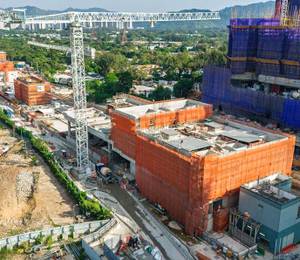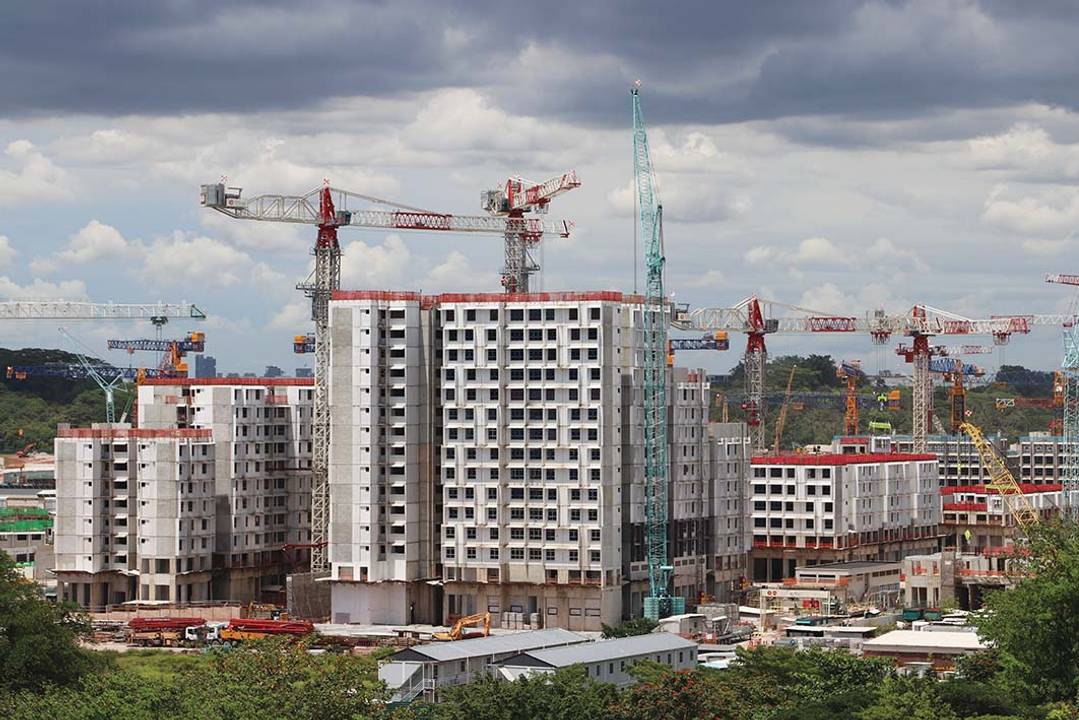A new residential development in Singapore is currently being built using the PPVC (prefabricated prefinished volumetric construction) method. Here, a number of tower cranes from Spanish manufacturer Jaso are in operation on site to help carry out the lifting work.
According to Jaso, there are about seven J1400 tower cranes commissioned on this project, which is located in Tengah area. The units are used to lift heavy materials, including the PPVC modules that weight up to 35 t. With a maximum 80-m-long jib, the J1400 can lift a maximum load of 64 t and has a tip load of 10.5 t.
These Jaso J1400 tower cranes are available in the country – and supplied to the project – through Singapore-based company Crane World Asia (CWA).
The growing trend towards PPVC projects, particularly in Asia, has led to increased demand for cranes with high lifting capacities. As a response, Jaso developed the J1400 model.
At 40 m reach, the J1400’s capacity is still 36 t. Increasing the hook height to 150 m only reduces the capacity by 1.4 t to 34.6 t, despite the extra 28-mm steel wire rope weight, said Jaso.
The counter-swing radius is 29 m when using 80 m boom, and 18.1 m with 40 m boom. With steel counterweights, it can be reduced by a further 1.8 m.
The tower system is in 5.6-m-long sections with a 2.16 x 2.16 m footprint. The hoist mechanism is 110 kW or 132 kW, and for greater safety, a secondary clamp brake is available on hoist and trolley.
Jaso added that the full crane, including the top kit, can be transported in standard 40-ft ISO shipping containers with no special flat rack or open top needed. This is facilitated by a folding counter jib design.
The mast sections, slewing table, and jacking cage are all small in size, making them easy to transport to the jobsite. During erection, there is no need to use large mobile or crawler cranes as the heaviest component of the J1400 is only 21,600 kg, which can be reduced to around 10 t if required.
Jaso further pointed out the benefits of adopting the PPVC method, such as higher productivity and enhanced quality of construction. “The pre-assembly of volumetric units can be carried out off-site, in tandem with other activities on-site. These off-site works at the ground level can minimise the wastage of materials, and reduce the need to hoist raw materials onto elevated blocks under construction.”
“Volumetric construction in a factory environment offers more uniform and better quality workmanship,” continued Jaso. “The incidence of wet construction joints is also reduced, thereby improving the water tightness of wet areas.”
In addition, PPVC projects minimise the need for manpower on-site and improve work safety. “By fabricating the volumetric modular units off-site in a controlled factory environment, fewer workers are required on-site,” noted Jaso, ”thereby improving overall site safety.”
Another benefit is the reduced impact on the environment. “With part of the finishes done off-site, less noise and dust is generated at the construction sites, thereby minimising disamenities to surrounding residents. It also helps to improve housekeeping at construction sites.”
Jaso said several of its J800.48 tower cranes are deployed on this project as well. The J800.48 is the manufacturer’s second biggest model, suitable for lifting loads ranging from 18 to 20 t at 40 m. The crane has an 80 m reach, maximum load of 48 t and maximum tip load of 5.1 t.














